Additional notes (click to expand)
Medicinal
The following notes refer to use in traditional medicine.
Sweet basil has been used for thousands of years as a culinary and medicinal herb. It acts principally on the digestive and nervous systems, easing flatulence, stomach cramps, colic and indigestion[Chevallier. A. The Encyclopedia of Medicinal Plants Dorling Kindersley. London 1996].
https://pfaf.org https://pfaf.org/user/Plant.aspx?LatinName=Ocimum+basilicum
Other use
Culpeper: ‘Ocymum. Basil. Hot and moist. Simeon Sethi saith the smell of basil is good for the head, but Hollerius (and he no mean physician neither). saith the continual smell of it hurts the brain and breeds Scorpions there ... the truth is it will quickly putrify and breed worms. Hollerius saith that they are venomous and that is the reason the name Basilicon was given to it ... It gives speedy deliverance to women in travail [=labour].’ He adds ‘there is an antipathy between it and Rue’
Notes: Basilisks are small lizards, but in mythology were fabulous reptiles, hatched by a serpent from the egg of a cockerel, able to blast by its fiery breath or stare. The lifecycle of animals and insects was still a mystery in the early 17th century. Basil is widely used in salads, especially with tomatoes. Modern internet herbals recommend it for a much wider spectrum of illnesses, but follow Culpeper in advising that it does not grow well when planted near Rue.
Culpeper, Nicholas. (1650). A Physical Directory . London, Peter Cole.
Contains safrole (see also under toxicity) which is a natural pesticide in many plants; 2000 tons a year are used to make commercial pesticides. It is also used in the manufacture of Ecstasy. Used also in manufacture of fragrances, but no longer legally added to food or drink. (see Safrole in Wikipedia)
Toxicity
Ocimum gratissimum contains citral a monterpene alkaloid. There was an increased incidence in malignant lymphomas in female mice, but not in rats or male mice. No definite evidence of genotoxicity found though 'positive results in sister chromatid exchange assay.'
No information in this article on Ocimum basilicum.
van den Berg, S.J.P.L., Restani, et al., P.. (2011). Levels of Genotoxic and Carcinogenic Compounds in Plant Food Supplements and Associated Risk Assessment. Food and Nutrition Science 2: 989-1010.
link
Contains estragole and safrole, alkylbenzenes, which are carcinogenic and genotoxic in rodents.
van den Berg, S.J.P.L., Restani, et al., P.. (2011). Levels of Genotoxic and Carcinogenic Compounds in Plant Food Supplements and Associated Risk Assessment. Food and Nutrition Science 2: 989-1010.
link
Ocimum basilicum L.
Family: LAMIACEAEGenus: Ocimum
Species: basilicum L.
Common names: Sweet Basil
Pharmacopoeia Londinensis name: Ocymum, Ocymum seu Basilicum Caryophllatum
Distribution summary: Origin uncertain
Habit: Annual
Hardiness: H2 - Tender; cool or frost-free greenhouse
Garden status: Currently grown
Garden location: Plants in pots (POT)
Reason for growing: Medicinal, other use
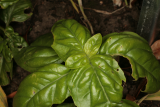
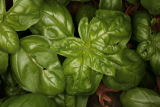
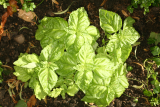
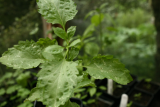
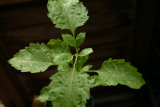
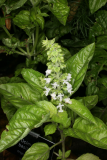
.JPG)
.JPG)